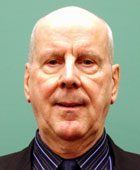Dr. Stanley Jeffers (About)
Associate Professor of Physics
Interests: Electrodynamics, Quantum Theory, Experiments
Degrees
-
1968 Ph.D., D.I.C Opto-electronics, Imperial College, University of London
-
1963 B.Sc., A.R.C.S. Physics (Special Honours), Imperial College, University of London
Scholarly and Professional Memberships
-
International Astronomical Union
-
Associate Editor, World Scientific Series in Contemporary Chemical Physics
Selected Publications
-
Hunter, G. and Jeffers, S. Realism and the realized Popper experiment, presented at the Fourth Vigier Symposium, Paris (2003).
-
Jeffers, S. Physics and claims for anomalous effects related to consciousness. Journal of Consciousness Studies10(6-7), 135-52 (2003).
-
Freedman, M., Jeffers, S., Sager, K., Binns, M. and Black, S. Effects of frontal lobe lesions on intentionality and random physical systems. J.Sci. Exp.17(3) (2003).
-
Evans, M.V. and Jeffers, S. The present status of the Quantum theory of light, in modern non-linear optics 3, 1-197, eds. I.Prigogene and S.A.Rice. Interscience (2001).
-
Jeffers, S., Lehnert, B., Abramson, N. and Chebotarev, L. Jean-Pierre Vigier and the stochastic interpretation of Quantum mechanics, Apeiron Press, Montreal (2000).
Current Research Projects
-
Interpretation of recent experiments bearing on quantum mechanics.
-
Analysis of extensive data gleaned from teaching large first year classes on claims for the efficacy of TEL (Technology Enhanced Learning).
Courses Taught
-
SC/NATS 1710 6.00 The Nature and Growth of Scientific Thought
-
SC/PHYS 1510 4.00 Introduction to Physics
Interference and diffraction phenomena have been studied using Maxwell's equations yielding amplitude, phase and Poynting vector spatial distributions for a variety of geometries. This analysis has been used to refute claims that a pulsed microwave double slit experiment might challenge Complementarity. Recent work has concerned experimental checks on the recent suggestion that the classical electromagnetic field may, if circularly polarised, carry a longitudinal, constant component, the so-called B(3) field.


